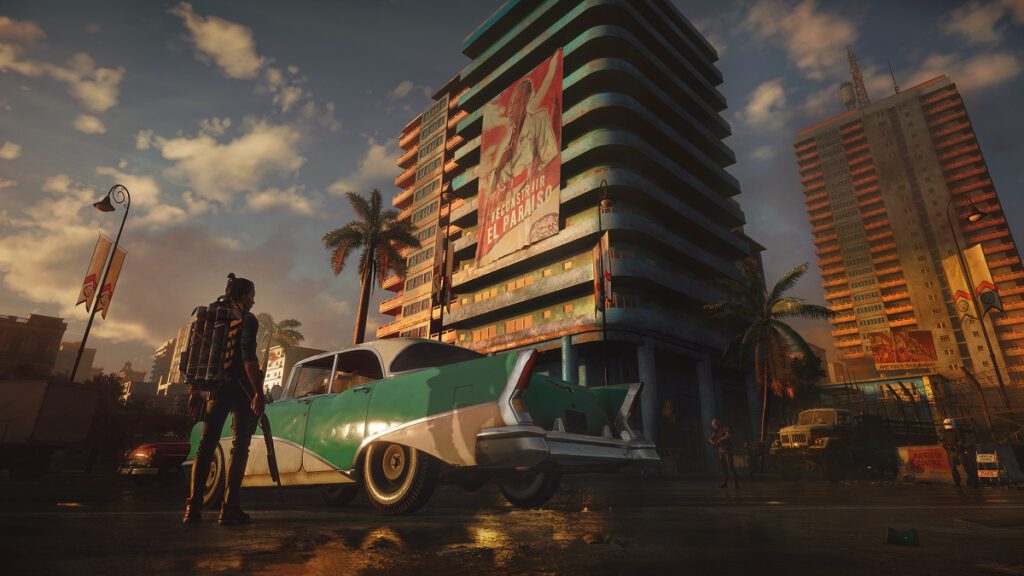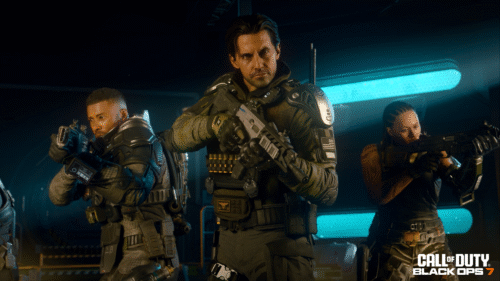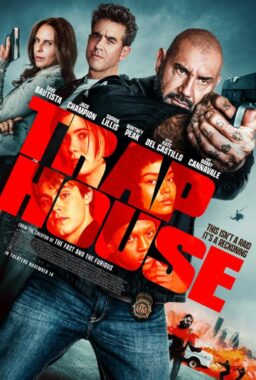Ubisoft’s “Far Cry 6,” out today for consoles and PC, is a lot of game. Too much really. It’s a game that often feels more cluttered than refined, even if the clutter allows for a lot of fun toys to play with in this brutal sandbox. It’s also a tough game to review because there’s an undeniable level of gleeful anarchy than can be addictive. One more mission, one more adventure, one more explosion. It’s designed to keep gamers entrenched in its world, jumping from one encounter to the next. However, these encounters start to get numbingly similar. Subtlety is not the draw of the “Far Cry” series, but the writers of this game seem uncertain of that fact, often hinting at richer, deeper, more complex experience before returning to the template of “make things go boom.” When star Giancarlo Esposito surfaces in cut scenes as a ruthless dictator, it seems like “Far Cry 6” could develop into a rich examination of power, something inspired by shows like “Narcos” or movies like “Sicario,” but its only moments later that you’re issuing instructions to a killer crocodile named Guapo and shooting rocket launchers at helicopters. I’ve enjoyed the many hours I’ve plugged into “Far Cry 6” so far, and yet it never quite lives up to its potential, willing to repeat itself and past “FC” games instead of feeling like a true next-gen experience.
“Far Cry 6” takes place on a fictional Caribbean island known as Yara, which is run with an iron fist by Anton Castillo, played with expected menace by the “Breaking Bad” star. You play Dani Rojas (who can be male or female), an ordinary resident who quickly becomes a hero of the Libertad revolution. What this means is traveling across a massive map, dismantling the regime piece by piece. You take down checkpoints, destroy propaganda, blow up anti-aircraft weapons, steal supply drops, and so on. Ostensibly, the game allows for different approaches, but almost every encounter ends with explosions.

Like past games in this series, crafting is an essential part of the experience, but it’s more of a chore here than in the past. Yes, you can hunt for supplies, but you’ll find most of what you need just about everywhere on Yara, picking up metal, medicine, scraps, money, gasoline, and more around the island. I’m not sure I’ve ever played a game so built on collecting items scattered around the landscape. And then you use those items to fashion mods and accessories for some pretty impressive weaponry. The weapon modifications make for some nifty firepower, but I felt almost unstoppable early on in the game, especially with the addition of intense weapons called Supremos. Yes, you can stealthily use your machete, but when you have guns that can dispatch most enemies with a shot or two, why bother?
If the bulk of “Far Cry 6” consists of repetitious destruction, it’s a more interesting game at its extremes. The bigger story missions are darker and more nuanced, even if they often flirt with a political statement that the writing feels unqualified to deliver, while the small details can sometimes be the most satisfying, including just sitting in a guerilla hideout and playing dominoes or fashioning outfits for your “amigos,” allies that can be brought into fights, including the aforementioned killer croc, a dog named Chorizo, and a killer rooster. (Note to animal lovers: There’s a cockfighting mini-game and you will regularly have to shoot enemy dogs. Never mind the number of times I accidentally shot or ran into a horse.)

As for that political aspect, “Far Cry 6” can’t seem to decide how seriously to take itself. In one moment, you’re rescuing political prisoners who have been tortured. In the next, you’re killing killer roosters for your cockfighting friend. I was a bigger fan of “Far Cry 5” than most because I felt like it was at least trying to address the violence that grows in the heartland of this country. “Far Cry 6” feels a bit more hollow and exploitative, using real-life dictatorial regimes for a game that also wants to be goofy at the same time. It’s kind of like the B-movie action flicks of the ‘80s—these games have long been inspired by films of companies like Cannon—in that the subject matter may be serious in the real world, but it’s just a backdrop here. And the stereotypes that the writing often leans into with it supporting cast may be cheesy fun to some but could also be considered offensive.
With a game of this size and scope, maybe it’s inevitable that developers struggle to bring it all together into one coherent package. “Far Cry 6” is a gorgeous game. It’s fun to just drive around the island, taking in its sights, and there are incredible little details hidden throughout. But the constant repetition feels like it never really takes full advantage of this setting. The details are there, but you’re doing the same thing over and over again against that detailed backdrop.
There are times when I’ll admit that I didn’t care. It’s an incredibly easy game to plug hours into, which may be all people want in Fall 2021, and I don’t blame them. But when those opening credits rolled, which are very film-inspired, I thought maybe I was about to experience the first truly cinematic next-gen game, and it doesn’t live up to that potential (at least three-quarters of the way through, which is where I estimate I’m at after many hours, dozens of side missions included). Both of these things can be true: I’ve enjoyed my time in Yara. I don’t think I’ll remember much about it by Christmas.
Ubisoft provided a PS5 review copy of this title.












